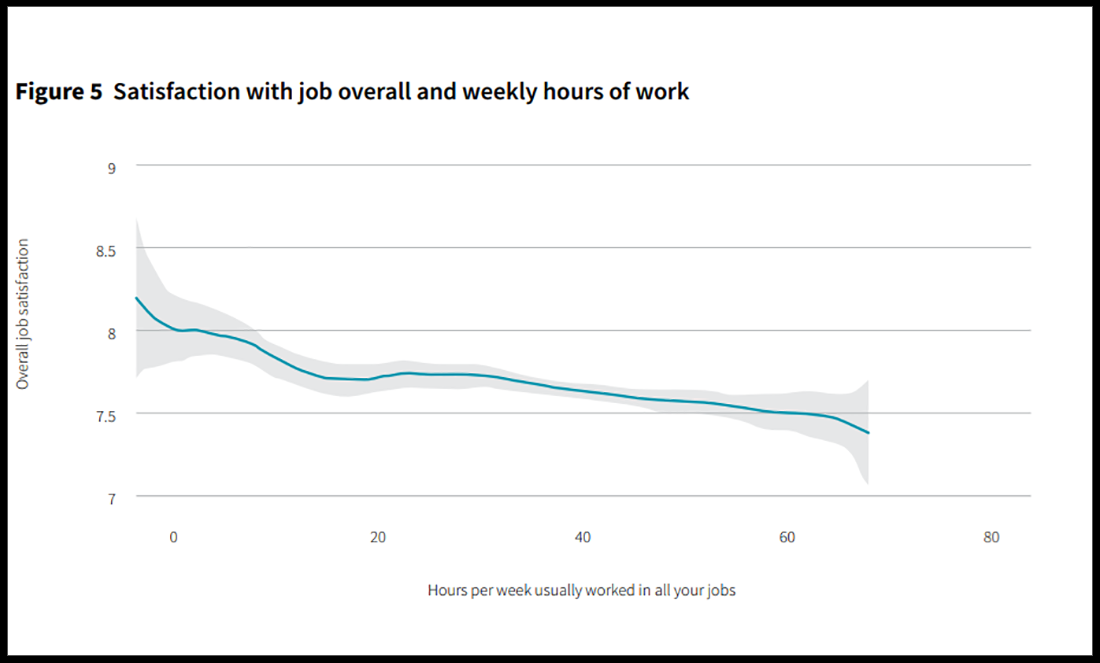Are you satisfied with your job?
If not, you’re not alone. According to a recent survey, West Australians are feeling the lowest levels of job satisfaction in the country.
So why aren’t West Aussies feeling the workplace love? And can we do better?
I spoke to the survey author Associate Professor Rebecca Cassells, from the Bankwest Curtin Economics Centre, to find out.
Does money buy happiness?
When you think about what makes people happy with their job, you might think it’s all about the money, money, money.
A lot of people—myself included—dream of earning a six-figure salary and making it rain every pay cheque.
But as Rebecca tells me, “Money doesn’t make us happy, really.”
“Obviously we need it to a certain point, and it can make us really unhappy if we don’t have enough to meet our basic living standards … but working really long hours and getting big pay packets isn’t necessarily going to translate into satisfaction for your job.”
The average pay of people who reported being very satisfied with their job overall was $1182 a week (roughly $57,000 per year). Interestingly, people who just reported being satisfied had a higher average wage of $1267 per week (roughly $60,000 per year).
Obviously, everyone wants to earn enough to pay their bills, with a little extra to squirrel away for bigger expenses. And it can be quite depressing when you can’t do that comfortably. People who reported being dissatisfied with their wage were earning an average of $877 per week, which was the lowest wage bracket in the survey.

“We need it to a certain point … but working really long hours and getting big pay packets isn’t necessarily going to translate into satisfaction for your job.”
But once you’re earning enough to be secure, rejoice! Because taking on extra hours for the extra dough doesn’t always pay off.
Working to death
I’m not just being hyperbolic (well, maybe a little). In Japan, so many people died from overworking that they actually made a word for it.
We’re not at that point in Australia yet, but long working hours are taking a toll. Rebecca’s survey found that satisfaction levels drop significantly when people work over 38 hours a week.
“There’s a bit of a sweet spot I guess with the amount of hours you work, and if you go over those hours, you’re more likely to be pretty dissatisfied with your job,” says Rebecca.
Like pay, workers need a certain number of hours work each week to feel satisfied. Any less or too much more and you’ll start to feel the workplace blues.
“Part-time hours or low-ish type hours are going to be more satisfying than working anything beyond say 38 hours a week,” says Rebecca.
“So it’s really important that we don’t overwork ourselves, and we can have that work-life balance.”

Working to live
As the adage goes: work to live, not live to work. And work-life balance is a vital part of that.
Think about it. What makes you happier? Sitting at your desk for 12 hours a day? Or knocking off early to see family, go for a bike ride or take your dog for a walk?
It’s a no-brainer.
“We’ve seen other studies that show that working big hours of work each week actually compromises our health—our physical health but also our mental health and wellbeing,” says Rebecca.
“But also, these big hours mean that we are not able fit in other things that are probably really good for us—like exercise but also connecting with family and friends.”
Being able to work from home had survey participants reporting higher levels of satisfaction. But there are other ways to find that balance.
We could take a leaf out of Sweden’s book and try 6-hour working days. Or submit ourselves completely to the gig economy—though that may come with its own problems.
“You’re able to actually sell your labour in a different way compared to what you were able to before,” explains Rebecca, referring to Airbnb, Uber and Airtasker as examples.
“That can be a really good thing for lots of people in that they’ve got more freedom and flexibility and more control over selling their skills. But at the same time, it sort of represents a problem when they may not have a job that’s secure and that gives them a constant income stream.”
“So a few things for governments to think about in the future when it comes to the way in which our workers’ lives are changing.”
Work wives the key to happiness?
One thing I was dying to ask Rebecca was whether she’d found evidence that a work spouse or bestie made a difference to job satisfaction—mostly because my beloved work wife Kirsten hopped on a plane to London a few weeks ago, taking a piece of my heart with her. Afternoon tea breaks will never be the same without her.
“The most important part of making the job satisfying is actually the job itself—so who you’re working with and who you’re working for and what you’re actually doing each day.”
While Rebecca didn’t specifically look at work besties, she did find that the people you work with do make for a happier workplace as part of the overall job itself.
“The most important part of making the job satisfying is actually the job itself—so who you’re working with and who you’re working for and what you’re actually doing each day,” says Rebecca.
“If you’re working alongside people you respect, and they respect you … then that’s going to let you walk away from the job every day feeling pretty good about it.”
“I think that aspect of it encompasses having a buddy at work, but it probably also encompasses things like having a really good boss as well.”
These words ring very true to my experience, where my work buddies and the office culture have made all the difference for me at many different jobs.
But in some workplaces, friendships are actively discouraged. In my last job, following a takeover of the business, a leaked email from our new owner dismissed our company’s friendly culture as a “country club”. They promised to rein us all in, and in return, there were a lot of resignations.
What they didn’t realise was that the culture was a large part of what motivated employees. Happy workers are productive workers. And Rebecca believes “there’s a real business case” for employers to foster happy work environments.
“We know that people that are more satisfied at work are more productive and they tend to turn up more often than not, so there’s fewer sick days/sick leave and there’s less staff turnover,” says Rebecca.
“That’s really a call to action for employers to make sure that job is as satisfying as it can be.”

The secret to happy workers
Making a happy workplace is really quite simple in theory: reasonable working hours, flexibility and work-life balance and an enjoyable workplace environment where people get along.
In practice, it doesn’t always work like that.
But it’s worthwhile for employers to consider, especially if they want to keep their skilled staff. Hiring and training new employees can get costly, so if you want to keep yours around, you should try to keep them happy.
Your workplace is somewhere you spend a huge portion of your life. In some cases, you see your coworkers as much or more than your own family members.
So why not make this as enjoyable as it can be?
Because when you love what you do, you’ll never work a day in your life.











